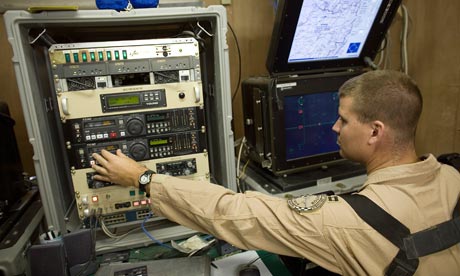Glenn Greenwald
Guardian.co.uk
August 21, 2012
 US air force pilot controls a Predator drone
US air force pilot controls a Predator droneThe US government has long maintained, reasonably enough, that a defining tactic of terrorism is to launch a follow-up attack aimed at those who go to the scene of the original attack to rescue the wounded and remove the dead. Morally, such methods have also been widely condemned by the west as a hallmark of savagery. Yet, as was demonstrated yet again this weekend in Pakistan, this has become one of the favorite tactics of the very same US government.
A 2004 official alert from the FBI warned that “terrorists may use secondary explosive devices to kill and injure emergency personnel responding to an initial attack”; the bulletin advised that such terror devices “are generally detonated less than one hour after initial attack, targeting first responders as well as the general population”. Security experts have long noted that the evil of this tactic lies in its exploitation of the natural human tendency to go to the scene of an attack to provide aid to those who are injured, and is specifically potent for sowing terror by instilling in the population an expectation that attacks can, and likely will, occur again at any time and place:
“‘The problem is that once the initial explosion goes off, many people will believe that’s it, and will respond accordingly,’ [the Heritage Foundation’s Jack] Spencer said … The goal is to ‘incite more terror. If there’s an initial explosion and a second explosion, then we’re thinking about a third explosion,’ Spencer said.”
The Emergency Election Sale is now live! Get 30% to 60% off our most popular products today!


